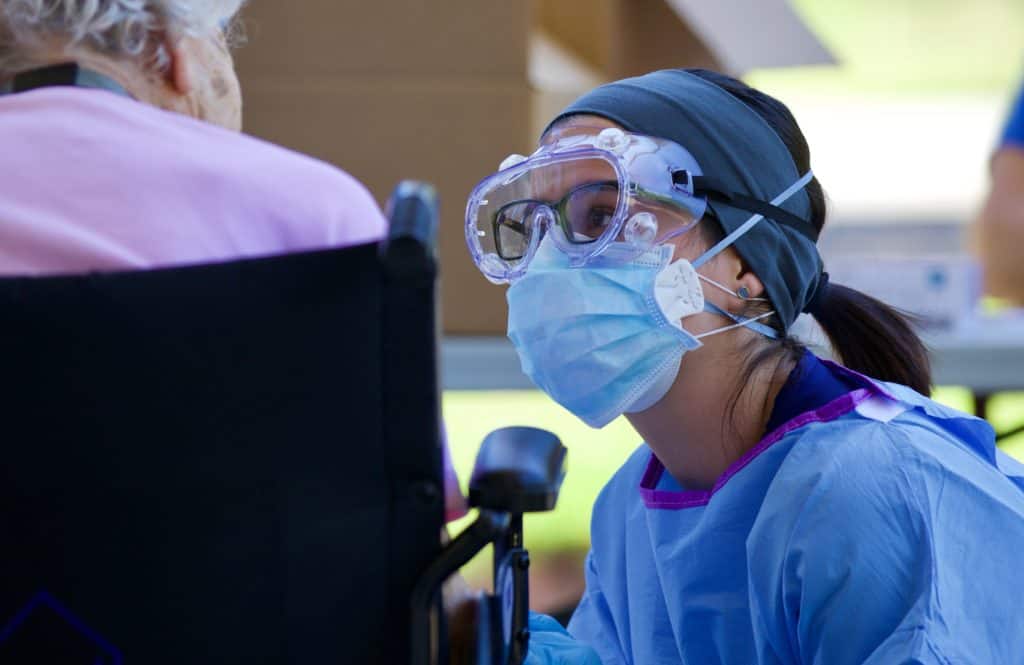As the coronavirus continues to cause devastation across the United States, nursing homes have become hotspots for COVID-19 exposure. More than 1 in 4 nursing homes have reported at least one case of the virus. According to reports from 40 states, residents and staff of nursing homes and other assisted-living facilities account for 43% of national COVID-19 deaths. Long-term care facility deaths account for over half of the deaths in 21 states, with some states reaching proportions as high as 70% to 80%.
There are a number of different reasons that nursing homes and other long-term care facilities have been hit the hardest by the pandemic. First, COVID-19 is known to be particularly lethal to older adults, especially those with underlying health conditions. Nursing homes also facilitate the spread of the virus with their shared living spaces and workers that move from room to room to help multiple patients in a short amount of time.
To make matters worse, the federal government has prioritized hospitals over nursing homes in their distribution of resources like personal protective equipment and testing kits. And inspections of one of the largest nursing home chains in the country revealed violations of federal standards meant to control and prevent the spread of diseases, such as hand washing, social distancing and sanitizing equipment. As a result, many nursing home facilities are struggling to track cases and prevent the spread of the virus.
Residents are not the only vulnerable group in long-term care facilities. Individuals who work in these settings — especially nurses and nursing assistants — are at a high risk of exposure to the virus as they come into close contact with many residents every day, sometimes even working at multiple facilities to make a living. Nursing home workers are severely underpaid, with many making less than $15 an hour. Many facilities still do not offer paid sick leave to their employees, and Congress has yet to seriously consider a proposal to offer hazard pay. As a result, most workers cannot afford to stay home if they are sick, thus adding additional risks to residents and coworkers. The low wages, lack of paid leave and high turnover rates make this demanding job even more difficult as they cause staff shortages and financial strain. Nursing home workers, most of whom are women, people of color and immigrants, face significant health and economic disparities in this pandemic.
To address the high rates and fast transmission of COVID-19 in nursing homes, many governors are ordering universal testing of all nursing home residents and staff. States including New York, New Jersey, Pennsylvania, Delaware, Arizona and Texas are developing and implementing plans to test residents and workers. Some of these plans call for retesting or continuous testing to ensure the quick identification and isolation of cases. Delaware Governor John Carney announced the state’s plan for universal testing on May 5, and one week later the Division of Public Health sent thousands of test kits to facilities. Despite quick responses in some states, however, test kit shortages remain a significant issue. As more efforts are made to increase testing and allocate more personal protective equipment to nursing homes, we will hopefully see a reduction in COVID-19 cases and deaths among these vulnerable populations. To ensure the health, safety and financial security of nursing home workers, long-term care facilities and governments must implement policies to increase hazard pay and paid leave so that they are adequately compensated for their essential work.
Marjanna Smith is a NCRC’s Special Initiatives Intern.
Photo by Florida National Guard.



